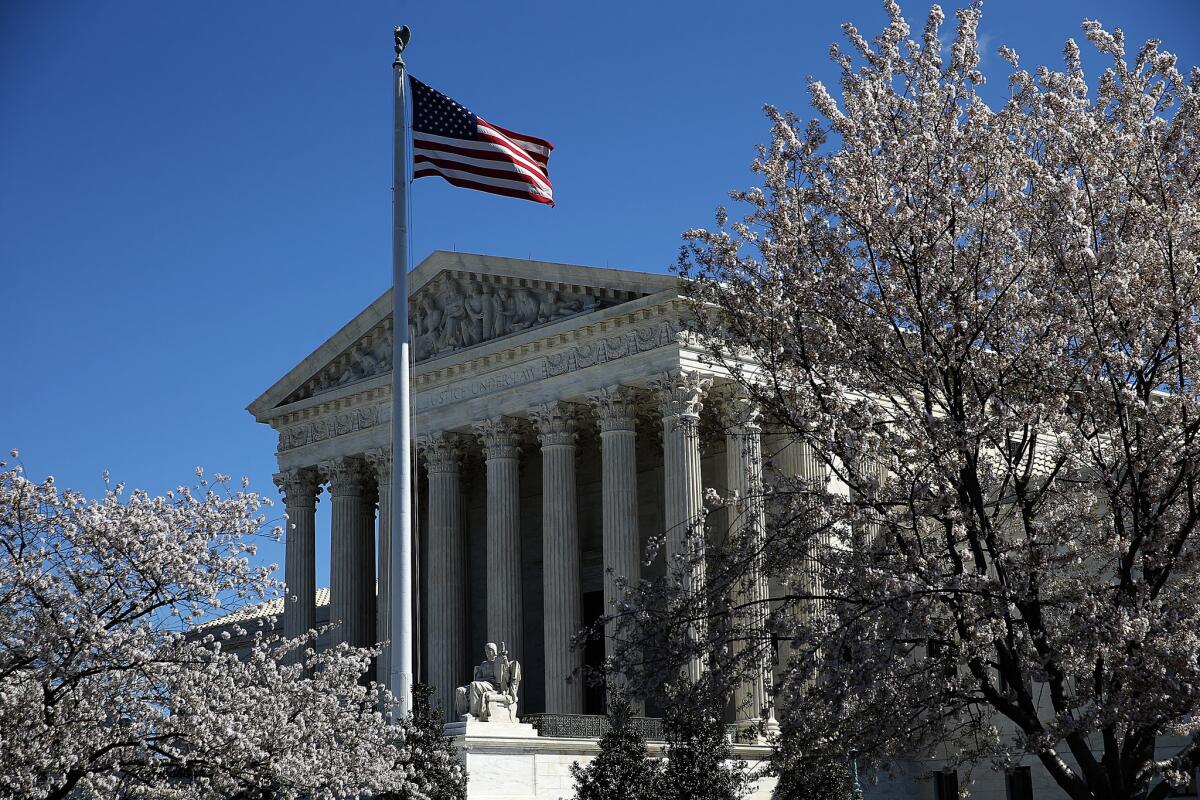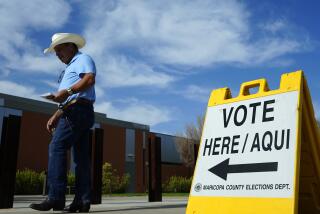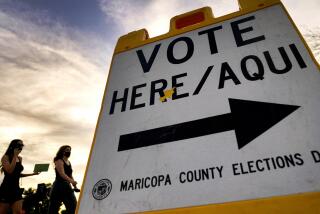Supreme Court rejects voting-district challenge that would have weakened Los Angeles’ clout

The U.S. Supreme Court in Washington, D.C., on March 29.
- Share via
Reporting from Washington — For the second time in two weeks, a conservative bid to shift the law to the right fizzled at the Supreme Court, when the justices on Monday upheld the current, widely-used method of counting every person—not just voters—when drawing election districts.
The unanimous ruling rejected a constitutional claim that states and municipalities may count only eligible voters when dividing up districts.
Had the court accepted such an interpretation, it would have shifted power away from cities with fast-growing communities of immigrants, including Los Angeles, Houston and Phoenix, and given more clout to suburban and rural areas. Doing so would have generally strengthened Republicans and undercut Democrats.
“History, our decisions and settled practice in all 50 states and countless jurisdictions point in the same direction,” said Justice Ruth Bader Ginsburg, explaining the high court’s decision to uphold the constitutionality of the existing practice. Political power, she said, may be divided up “on the basis of the total population.”
Liberals and civil rights advocates, who had feared a string of losses this year at the hands of the court’s conservatives, instead celebrated another victory.
Thomas Saenz, president of the Mexican American Legal Defense and Educational Fund, called the decision a “tremendous victory for democratic representation that recognizes all constituents count.” Miles Rapoport, president of advocacy group Common Cause, said it “affirms one of our most fundamental values as Americans: that every person counts.”
------------
FOR THE RECORD
March 5, 10:22 a.m.: An earlier version of this article stated that Thomas Saenz, president of the Mexican American Legal Defense and Educational Fund., said that the Supreme Court’s voting-district decision recognized that “all citizens count.” He said the decision recognized that “all constituents count.”
------------
Ever since the February death of Justice Antonin Scalia, conservatives have been left without a crucial fifth vote, raising doubts about their ability to control the court’s rulings.
Last week, the justices said they were split 4-4 and could not decide a major challenge to unions. Conservatives had urged the court to overturn a nearly 40-year-old precedent that allows public-sector unions to collect “fair share fees” from all employees to help pay for collective bargaining. Due to the deadlock, the union’s ability to charge the fees was left in place.
It’s not clear what role Scalia’s death played in the dispute over election districts, but it may explain why the decision was narrowly crafted.
While agreeing to uphold the legality of the status quo, the court left the door open for states to try different methods to draw election districts in the future, including taking into account the number of voters, rather than counting all persons.
The case began with conservative activist Edward Blum, who claimed the “one person, one vote” rule adopted by the Supreme Court in the 1960s meant that the election districts should represent equal numbers of voters.
He launched a lawsuit on behalf of Sue Evenwel, a Republican county official from East Texas, who alleged the practice of counting everyone had the effect of “diluting” the votes of citizens like her in favor of districts with a high number of non-voters, including foreign residents, children and prisoners.
The high court agreed to hear Evenwel’s claim last year and in December, conservative justices sounded receptive. “It is called ‘one person, one vote.’ That seems designed to protect voters,” Chief Justice John G. Roberts Jr. commented.
But Evenwel’s claim faced practical and legal problems. For one thing, the census is seen as providing the most accurate data on neighborhoods, and it counts all residents, not just citizens or voters.
Also, the U.S. Constitution says members of the House shall be divided up among the states “based on counting the whole number of persons.”
“It cannot be,” Ginsburg wrote, “that the 14th Amendment calls for the apportionment of congressional districts based on total population, but simultaneously prohibits states from apportioning their own legislative districts on the same basis.”
But her opinion left unanswered a key question. “We need not and do not resolve whether, as Texas now argues, states may draw districts to equalize voter-eligible population rather than total population.”
Roberts and Justices Anthony M. Kennedy, Stephen Breyer, Sonia Sotomayor and Elena Kagan joined her opinion, while Justices Clarence Thomas and Samuel A. Alito Jr. concurred separately.
Thomas wrote an 18-page separate opinion arguing the court was wrong in the 1960s to rule that election districts in states must represent an equal number of people. Alito wrote to dispute the “meretricious argument” cited by Ginsburg that the Constitution suggests all people should be counted when drawing districts.
In the end, it was not clear whether Roberts and the other conservatives agreed that Texas, as a matter of states’ rights, was free to decide whom to count when drawing its districts, or whether they implicitly agreed with the liberals that counting all the people was required.
The outcome in Evenwel vs. Abbott leaves open the possibility that lawmakers in Texas and other conservative states could decide after the next census to redraw their election districts using data on eligible voters.
Blum, whose small group was behind the successful 2013 case that led the high court to strike down parts of the Voting Rights Act of 1965, said he was “disappointed that the justices were unwilling to reestablish the original principle of one person, one vote…But the issue of voter equality is not going away,” he said.
Still pending before the court is another of Blum’s cases, a challenge to the affirmative action policy at the University of Texas.
Twitter: @DavidGSavage
ALSO
Native American casino plan wagers on tiny Illinois town
Pot sales healing economic woes of the Colorado town of DeBeque
Seattle continues quest to get greener as it grows with ‘transformative’ light-rail expansion
More to Read
Sign up for Essential California
The most important California stories and recommendations in your inbox every morning.
You may occasionally receive promotional content from the Los Angeles Times.











